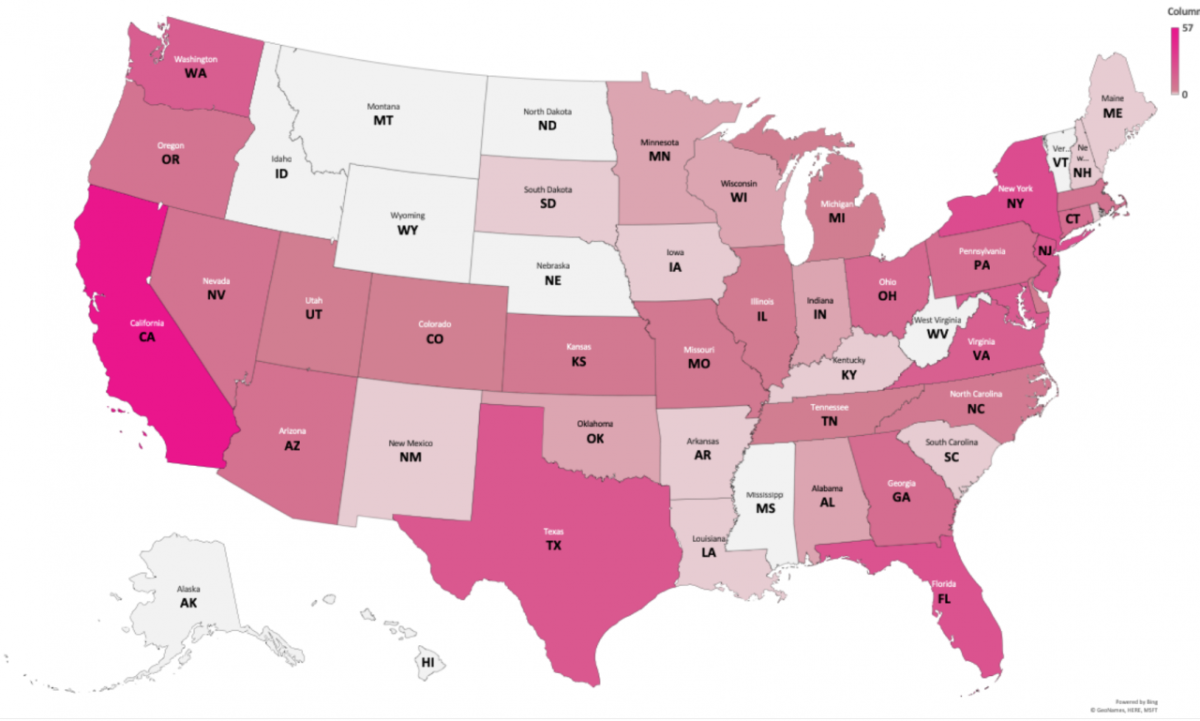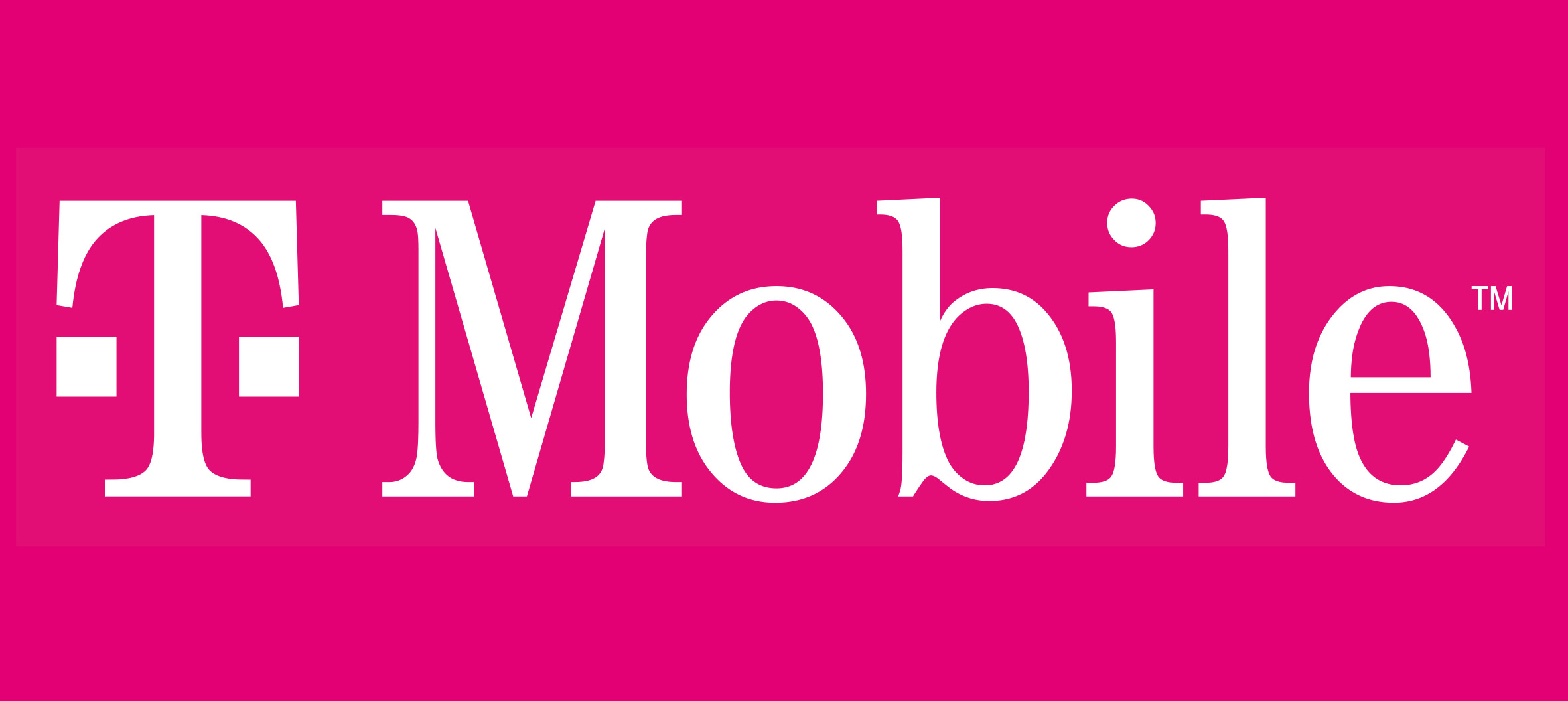Changemaking Trends From 400+ Young People Across the US

Originally published by Ashoka
Today we revealed our top 30 entries in the 2019 T-Mobile Changemaker Challenge. Over the past three months, hundreds of changemakers ages 13–23 have told us about their ideas and initiatives to make a difference in their communities.
Across 428 submissions from the U.S. and Puerto Rico, we’ve not only seen interesting individual projects, but exciting trends that provide a glimpse into the issues Gen Z changemakers care about — and what they’re doing to solve them.
Who are the young changemakers of 2019?
This year’s applicants are a young, highly diverse group — nearly half are under age 17. The group represented 41 U.S. states and Puerto Rico, with most teams coming from California, New York, Texas and Washington.
A couple of facts stand out: First, 77% of applicants identified with an underrepresented community, including individuals from racial or ethnic minorities, religious minorities, and low-income, LGBTQ+, or disability communities. The cohort of changemakers reflects the most diverse generation in United States history, with the majority coming from communities of color.
Second, nearly two-thirds of the applications we received were from young women. Many of them are passionate about closing the gender gap — especially in the world of education, technology and STEM. (More on that later!)
Read on to discover just how youth are developing solutions across our three Challenge categories: technology, education and the environment.
Transforming Education
By far, we received the most submissions in the education category. Nearly half of Challenge entrants shared their ideas for changing education, starting at their schools or extending into their communities. They’re developing powerful new ways for students to empower each other and receive the support they need.
Across education innovations, we saw the most entries related to mentorship, social issues (especially connected to underrepresentation), and gender-related issues.
The most popular approach — accounting for 23 entries alone — was mentorship. Youth are looking to support their peers as they navigate issues from personal identity, to career paths, to addiction recovery.
Take, for example, Terrell, Sean, and Israel — a trio in Pittsburg, PA. They hatched the idea for Future Kings Mentoring — a mentorship program for male-identifying youth that aims to “conquer racial inequity” through a discussion-based forum designed to build their confidence in their future and capabilities.
We’re seeing many changemakers address social issues in education, seeking support underrepresented students and promote inclusivity.
In Jacksonville, FL, Brandon created Hey Schools! Let Teens Take the Wheel — an initiative empowering teens impacted by issues like crime and violence to educate school leaders about the problems they face in order to improve policies. “No one can be a better representative for youth than themselves,” Brandon writes.
Still other education initiatives focused on gender. Malavika created Homegirl Project, which trains the next generation of girls and non-binary youth of color to become political changemakers. Manat and the team behind Object: Now Girly Means Confident promote confidence in young girls by connecting them with women role models through storytelling and experiential activities.
Taking on Tech
Nearly a third of Challenge entries focused on tech. Young leaders are passionate about increasing access to STEM careers — we received a whopping 21 entries focused on empowering girls in STEM or STEAM (Science, Technology, Engineering, Arts & Math) education, and 18 additional STEM-related entries!
In a world where tech looms large, youth are ready to disrupt this powerful — and notoriously exclusive — industry.
Some projects convene young people for in-person trainings, like She Can Tech, a 15-day technology camp founded by Sanja and her team for girls grades 4–9, preparing them for future endeavors in STEM.
“Every child asks how the world works. Some inquisitors are rewarded with detailed explanations, others receive simplifications, but many get ‘You don’t need to know that,’” writes Sanja. “Frequently, many are women, especially women of color, who are raised believing that they do not belong in STEM.”
Vardhan recognized that two-thirds of engineering jobs are in computer science, but under 10% of disadvantaged students major in it. He created TheOpenCode Foundation, a nonprofit that provides underrepresented youth the opportunity to pursue a career in computer science.
We also saw a high volume of health-related tech projects, including innovative apps. Siblings Hannah and Charlie created notOK, a mental health app that works like a “digital panic button” to provide immediate support from trusted contacts via text, phone call, or GPS location when someone is struggling to reach out. Karthik and Kushi created AmityConnect to connect family members with the health of their elders by aggregating real-time data from smart medical devices.
Saving the Environment
Not-so-surprisingly, climate change was the top focus area for ideas in the environment category. Youth activists are developing creative approaches to the issue — in California, Kevin and Jack started Youth Climate Action Coalition, a youth-led environmental organization working to mitigate effects of climate change by reducing the carbon footprint of schools and communities.
“Growing up in Northern California, we’ve always had an appreciation for our environment, and when saw the disastrous effects of climate change first hand, we knew it was time to stand up and take initiative,” the pair write.
Conservation also ranks high on the list, from projects focused on species and ecosystem health to plastic waste. Adithi created BEEducated, a youth-driven organization combating the harmful environmental and economic effects of Colony Collapse Disorder on bees. The Green Sleep Project, founded by Isha Patel, is giving plastic bags a new life by turning them into sleeping mats for the homeless and educating youth on pollution and climate change.
We also saw entries related to food, water, and sustainability. Aditya and Rishab created the 1 Week to Save the Earth Challenge, inviting people to go without meat and/or dairy for a week in the effort to make a statement and reduce emissions by causing a cultural shift in eating patterns.
In Puerto Rico, Omar and his team invented Remora — an affordable water filtration device that allows communities to take immediate action to clean their water sources — and they aim create awareness around sustainability and our water sources.
What’s next?
The message is clear: despite inheriting complex, systemic challenges, younger generations are leading the way to build a better future.
The solutions we’re seeing come in different sizes and are at various stages. They range from brand-new ideas to well-established organizations. (Over a quarter of the entries were in the idea stage, while nearly half were in the start-up or growth stages.)
To win the T-Mobile Changemaker Challenge, entrants don’t need to have a venture that’s already up-and-running — finalists include new ideas, established innovations, and many in between.
Our top 30 teams will have the opportunity to attend the Changemaker Lab in Seattle this February, where the top finalist in each of our three categories — education, environment and technology — will pitch their ideas to a panel for a chance at the $10,000 grand prize for their venture.
We’ve already seen how young changemakers have made a significant impact worth celebrating — and there’s plenty to be excited about with new, ready-to-implement ideas on the horizon. This is also a valuable chance to get involved and build changemaking movements. Learn more about our top 30 and how you can follow their lead.
Max Bengoa contributed the analysis for this story.

